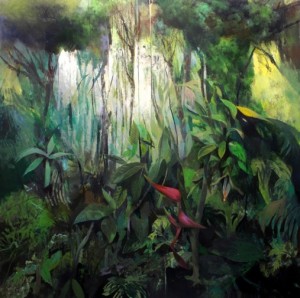 Tim Hall has recently called on geographers to more actively study organized crime and geographies of the illicit more broadly. Paul Robbins, meanwhile, has said “the political ecology of the drug trade” (2004: 215) remains almost entirely unexplored. The ferocity with which the drug trade has seized Central America and Mexico has produced a spate of press articles dealing with exactly the intersections between organized crime, illicit drugs, and political ecology. The drug trade has become a motor of ecologically destructive processes that are not immediately tied to the production of drug-related crops. In other words, this is not the deforestation driven by coca plant production as described in Susana Hecht and Alexander Cockburn’s classic The Fate of the Forest. At the root of the “new” ecological destruction is money—lots of it. Booming drug profits and the laundering of narco-dollars are catalyzing something like a “spatial fix” in (undercapitalized) ecologically rich areas.
Tim Hall has recently called on geographers to more actively study organized crime and geographies of the illicit more broadly. Paul Robbins, meanwhile, has said “the political ecology of the drug trade” (2004: 215) remains almost entirely unexplored. The ferocity with which the drug trade has seized Central America and Mexico has produced a spate of press articles dealing with exactly the intersections between organized crime, illicit drugs, and political ecology. The drug trade has become a motor of ecologically destructive processes that are not immediately tied to the production of drug-related crops. In other words, this is not the deforestation driven by coca plant production as described in Susana Hecht and Alexander Cockburn’s classic The Fate of the Forest. At the root of the “new” ecological destruction is money—lots of it. Booming drug profits and the laundering of narco-dollars are catalyzing something like a “spatial fix” in (undercapitalized) ecologically rich areas.
The Guardian reports drug-funded cattle ranching is thrashing the sprawling Selva Maya, a tropical rainforest straddling the borders of Belize, Guatemala, and Mexico. Narco-dollars are being shunted into vast cattle estates, a process known locally as narcoganadería (narco-ranching). As has happened in Colombia since the 1980s, rural real estate and various agribusiness activities have become favored conduits of money laundering and illicit profit in Central America.
And it’s not just cattle. Cosecha Roja, a site on crime reportage in Latin America, highlights how Mexican drug syndicates have muscled their way into well-established mining operations. Illicit networks—say, between drugs and other contraband economies—usually create synergistic relations with each other. In Colombia, for instance, drug-fueled paramilitaries have tapped into the illegal lumber trade to help supplement their income. According to a UN report, organized crime controls 30 percent of the global lumber trade, reaping as much as $100 billion in the process.
I’ve written on some of this in my work on paramilitary-backed agribusiness, but the most detailed account I’ve seen on these dynamics is a paper presented at the Second Land Grab Conference held last year at Cornell University. The paper showed how the drug trade has become an accelerant for dispossession and deforestation in Honduras’ Aguán Valley. What’s nice about the paper, written by a group of geographers who wish to remain anonymous, is that it gets into some of the more local micro-economic dynamics without losing site of a broader political economy at work.
In my favorite piece on the “spatial fix,” David Harvey compares capitalism’s geographic movements to a drug addict’s fleeting satisfaction with every “fix” (2001). As spaces are sapped of their profit-producing potential, capitalism lunges toward its next fix. “Capitalism, we might say, is addicted to geographical expansion,” writes Harvey (2001, 24-25). Capitalism is the ultimate junkie. Spaces are also “fixed” not just geographically, but also in the sense of being deliberately equipped for circulation (e.g. infrastructure and other forms of “fixed” capital). Amid the dynamics of uneven development, Harvey describes how crises of overaccumulation—capital with no profitable outlet—trigger the violent geographical spurts of capitalism’s ever-broadening frontiers of investment and profit.
Jason Moore tracks a related process on a world-historical scale through the restless movement of “commodity frontiers,” which he shows are driven by the diminishing capacity of the biophysical environment (including laboring bodies) to sustain capitalist production—a massively scaled and systemic analysis of Marx’s notion of the town-country “metabolic rift.”
What this all amounts to is that I think we can understand the dynamics associated with narco-capital through these related ideas of spatial fixes, overaccumulation, and commodity frontiers (the Honduras paper talks about “resource frontiers,” which I think is right on). Narco-capital is almost by definition overaccumulated. Buying up lands and establishing agribusiness or extractive industries in generally “lawless” areas, which also happen to be under-capitalized, resource-rich, and ecologically sensitive, becomes a source—a spatial fix—for laundering and profit, usually with some kind of state complicity.
This is the second in a three-part series of posts on narco-geographies. Part I: HSBC and Global Money Laundering. Part III will look at drug money and urban real estate.

Pingback: Narco-Geographies, Part I: HSBC and Global Money Laundering | Territorial Masquerades
Permission to repost?
Yes, of course!
Pingback: Narco-Geographies, Part III: Urban Speculation and Spectacle | Territorial Masquerades